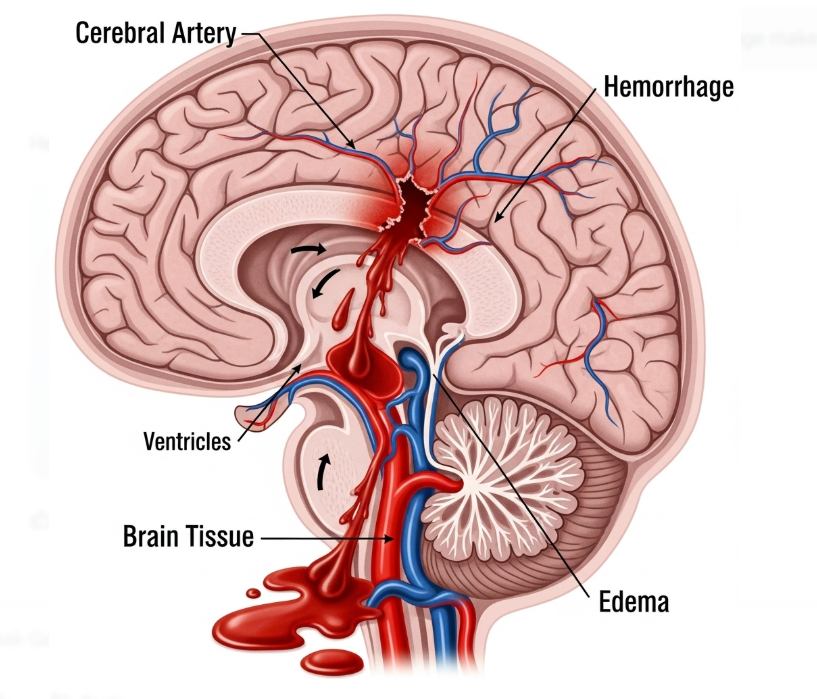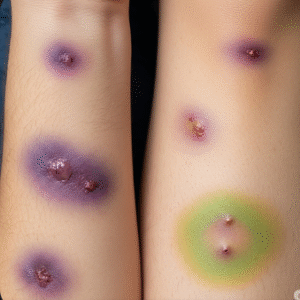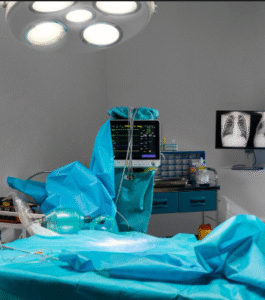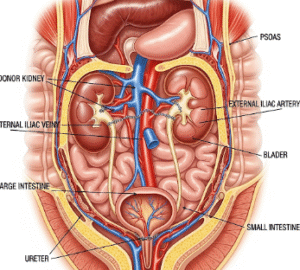Overview
Cerebral hemorrhage, also known as intracerebral hemorrhage, is a type of stroke caused by bleeding within the brain tissue. It can result in brain damage, neurological deficits, and life-threatening complications. In Korea, modern neurology and neurosurgery centers offer rapid diagnosis, advanced imaging, and comprehensive treatment to manage cerebral hemorrhage effectively.
Symptoms
- Sudden severe headache
- Weakness or numbness in the face, arms, or legs, often on one side
- Difficulty speaking or understanding speech (aphasia)
- Vision changes, such as blurred or double vision
- Loss of balance, dizziness, or difficulty walking
- Nausea and vomiting
- Seizures in some cases
- Altered consciousness or confusion
Causes
- High blood pressure (hypertension)
- Cerebral aneurysms or vascular malformations
- Head trauma or injury
- Blood clotting disorders
- Use of blood-thinning medications (anticoagulants)
- Brain tumors or infections affecting blood vessels
Risk Factors
- Hypertension and poorly controlled blood pressure
- Age above 55
- Smoking and excessive alcohol consumption
- Diabetes and high cholesterol
- Family history of stroke or hemorrhagic disorders
- Previous stroke or transient ischemic attack (TIA)
Diagnosis
In Korea, diagnosis involves rapid clinical evaluation and imaging:
- Neurological examination to assess deficits and consciousness level
- CT scan for quick detection of bleeding
- MRI for detailed brain imaging and detection of underlying causes
- CT or MR angiography to evaluate blood vessels for aneurysms or malformations
- Blood tests to assess clotting and metabolic conditions
Prevention
- Strict blood pressure control
- Healthy lifestyle: balanced diet, regular exercise, quitting smoking
- Managing diabetes and cholesterol
- Avoiding excessive alcohol use
- Regular health check-ups to monitor vascular health
- Safe use of anticoagulants under medical supervision
Treatment Options in Korea
- Medical Management
- Blood pressure management to prevent further bleeding
- Medications to reduce brain swelling
- Pain and symptom control
- Close monitoring in intensive care units
- Surgical Treatment
- Craniotomy or hematoma evacuation for large or life-threatening bleeds
- Minimally invasive endoscopic or stereotactic procedures in specialized centers
- Treatment of underlying aneurysms or vascular malformations
- Rehabilitation
- Physical, occupational, and speech therapy to restore function
- Long-term follow-up at neurological and rehabilitation centers
- Psychological support for patients and families













